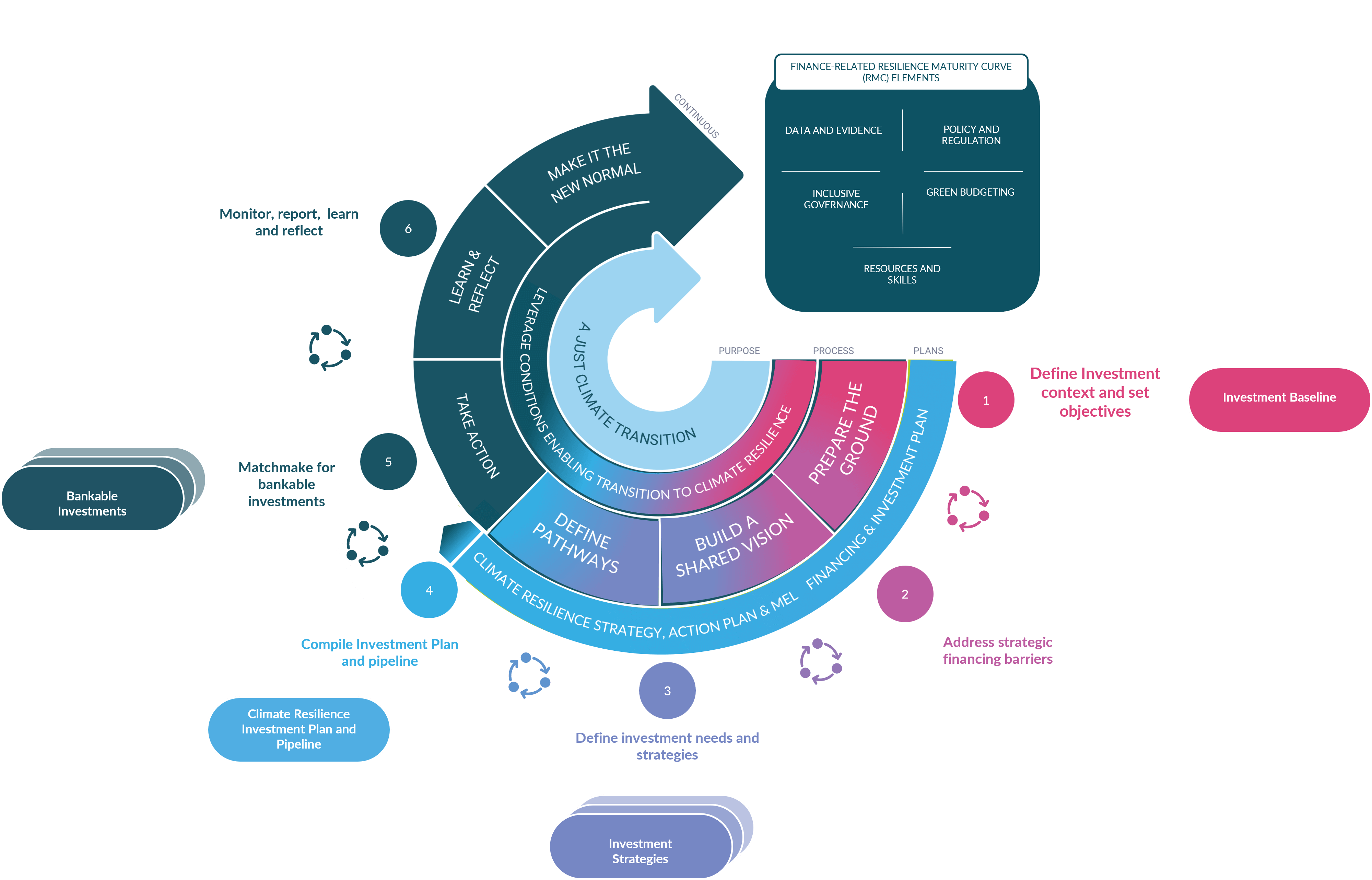Adaptation Investment Cycle
Background
Europe has a large adaptation finance gap. Subnational governments in Europe invested €8.3bn of adaptation in 2022, but annual adaptation needs to 2030 are estimated at between €16bn – 36bn, suggesting a gap of €8-28bn a year[1]. As such, the Adaptation Mission recognizes finance and resources as a Key Enabling Condition and seeks to use Mission funding to lever in greater public and private investment[2].
[1] Paul Watkiss Associates internal calculation. [2] European Commission (2021) Adaptation Mission Implementation Plan.
The Adaptation Investment Cycle
To help mobilise finance, and ensure that the Regional Resilience Journey leads to bankable projects (i.e. those that meet the conditions required by the financier to finance a project), the consortium has developed the Adaptation Investment Cycle – an iterative, 6 step process to develop Adaptation Investment Plans, designed to be completed as part of the Regional Resilience Journey. The Cycle develops the financial aspects of a Climate Resilience Strategy from the identification of adaptation needs and barriers to finance all the way to the implementation and monitoring of efficient adaptation project.

The process helps regions to identify the financing and investment needs for regional adaptation, and develop Investment strategies, Investment plans and a pipeline of bankable Investments to mobilise greater public, private and voluntary sector investment towards achieving their Climate Resilience Strategy, in a just and equitable way.
Further Information
The full detail of the Adaptation Investment Cycle will be released in early 2024, and Pathways2Resilience will be developing detailed guidance, resources, and templates to support the successful regions to apply it.
In the context of Pathways2Resilience’s work on regional adaptation finance, a Practitioner Finance Expert Working Group will be assembled by the end of 2023, acting as a liaison between regions and the broader financial assistance of Pathways2Resilience partners.
In addition, Pathways2Resilience will be developing a programme of training and capacity building, as well as working in depth with 9 regions across all levels of Maturity to provide tailored and targeted support.


